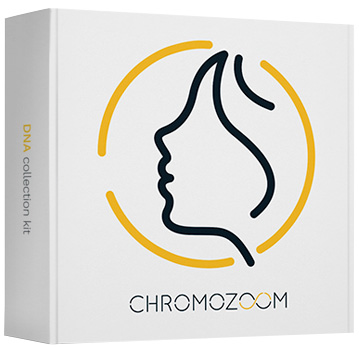Vitiligo
Vitiligo is a skin disorder caused by the complete loss of melanocytes (melanin forming skin cells) and pigmentation. Melanocytes are cells found in the top layer of the skin which are responsible for producing melanin pigment. Special organelles (i.e. melanosomes in which melanin is produced) are in the cytoplasm (the substance inside a cell surrounding its nucleus) of melanocytes. When melanocytes are mature, a pigment is released into the skin cells (keratinocytes) resulting in the coloration of the skin. Hence, melanin is essential to protect the skin from solar radiation effects and over exposure.
In vitiligo, functional melanocytes in the skin are absent and melanin pigment is not released. This creates white (amelanotic) spots on the skin which are surrounded by healthy skin.Colourless spots can occur on different parts of the body (hands, forearms, legs, and face), and may vary in size. Vitiligo often occurs in people 10-30 years of age. As the individual ages, the risk of vitiligo declines.
Vitiligo and its development
The cause of vitiligo (skin pigment loss) is not known precisely, but it is suspected that genetic, immunological (body's natural defense system), and neurological (functions of nervous system) factors are involved. Vitiligo shows polygenic inheritance which means that its development is conditioned by several genes at the same time.Whether or not symptoms appear depends on external factors that lead to the development of the disease. Due to inheritance, produced melanocytes (melanin forming skin cells) can be sensitive to certain external environmental factors (e.g. infections, stress, toxic substances). These factors can stimulate the destruction of melanocytes and lead to the development of an autoimmune response against melanocytes.
Autoantibodies
Autoantibodies are antibodies (natural defense mechanism) directed against their own tissues and cells. This is a situation where the immune system incorrectly distinguishes ‘self’ structures as ‘foreign’ (to be attacked and destroyed). Autoantibodies serve as a marker (identification sign) for autoimmune diseases.The exact mechanism leading to the destruction of melanocytes at a specific site of the skin remains unknown. However, there are three vitiligo hypotheses. The autoimmune hypothesis (theory based on limited evidence) argues that vitiligo is a type of autoimmune disease when the human immune system destroys its own cells and tissues. This hypothesis is supported by the frequent prevalence of autoimmune diseases such as psoriasis (skin disease represented by red, itchy, scaly patches), chronic urticaria (allergic reaction, usually to foods, with round, red, and itchy welts on the skin), alopecia (absence of body hair), and other disorders that are 10-15 times more frequent in patients with vitiligo.
In addition, the presence of circulating autoantibodies and cytotoxic T-cells (a type of white blood cells) directed against melanocytes and their components has been found in the serum of affected people.
The basis of comprehensive vitiligo treatment is an accurate diagnosis by a thorough examination and exclusion of other autoimmune and endocrine diseases that often accompany vitiligo.
The neural (relating to the nervous system) hypothesis describes dysfunction of the sympathetic nervous system which can lead to melanocyte damage and influence the production of melanin. The autotoxic theory describes the self-destruction of melanocytes. According to this theory, melanocytes produce a large number of substances which serve as precursors (substance from which another is formed) for melanin synthesis, some of which may be toxic. As a result, the amount of these substances accumulates in melanocytes and may cause the death of the cells.
Vitiligo and oxidative stress
Many other factors are involved in the development of vitiligo, particularly oxidative stress leading to increased levels of oxygen radical (ROS) which are toxic to melanocytes. An imbalance in the oxidant-antioxidant system can cause the impairment of melanocytes and damage the function of proteins involved in melanin synthesis (i.e. production of a substance from simpler materials after a chemical reaction).To illustrate this, in the TRP-1 protein, the oxidative stress effects may decrease melanin stability and stimulate the production of toxic melanin intermediates. Due to the increased oxidative stress and stress signals, melanocytes may lead to the activation of cells of congenital (present from birth) immunity.
Treatment
Autoimmune diseases (where the immune system mistakenly attacks healthy tissues), eye impairments (such as iris inflammation), changes in pigmentation of the retina, hearing impairment, and other health problems are often associated with vitiligo.Various methods are used in the treatment of vitiligo. In individuals who are extensively affected, treatment options include depigmentation therapy, topical application of corticosteroids (steroid hormone), Vitamin D derivatives which influence T-cell activation, phototherapy, and surgical treatment. One of the main results of vitiligo is its impact on self-confidence and a marked decrease in quality of life. In certain individuals, vitiligo may lead to depression.
